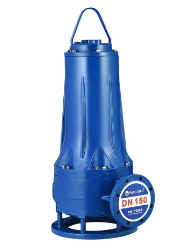Understanding the Working Principles of Solar Water Pumps

Wholesale solar water pumps are powered by solar energy, which is converted into electricity through photovoltaic (solar) panels. These panels capture sunlight and generate DC (direct current) power, which is then used to drive the pump and move water from one location to another.
The process starts with sunlight hitting the solar panels, which then convert the energy into electricity. This electricity powers the pump motor, which can be either a surface pump or a submersible pump depending on the application. Surface pumps are used for shallow water sources, while submersible pumps are ideal for deeper water sources, such as wells or boreholes.
The water is then pumped through pipes or hoses to the required destination, whether it is a storage tank, irrigation system, or water distribution point. Solar water pumps are available with varying flow rates and head capacities, allowing them to cater to a wide range of water pumping needs.
Solar water pumps are typically designed with controllers to manage the system and optimize the efficiency of energy usage. In some systems, a battery may be incorporated to store excess energy generated during the day, allowing the pump to operate even when sunlight is unavailable, such as during the night or on cloudy days.
Overall, the operation of solar water pumps is relatively simple, relying on sunlight to power a system that efficiently pumps water for various uses.
- Art
- Causes
- Crafts
- Crypto
- Dance
- Drinks
- Defi
- Film
- Fitness
- Food
- الألعاب
- Gardening
- Health
- الرئيسية
- Literature
- Music
- Networking
- أخرى
- Party
- Religion
- Shopping
- Sports
- Theater
- Wellness

